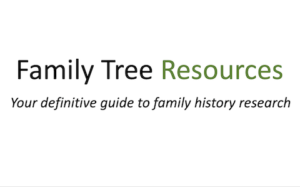Hardwickes Marriage Act 1753, coming into force on March 25, 1754, was titled ‘An Act for the better preventing of Clandestine Marriages’.
The Act’s purpose was to tighten the laws of marriages as they had previously been conducted by the clergy outside a parish church or chapel.
Many clandestine or irregular marriages were conducted in London’s Fleet Prison during the 17th and early 18th centuries.
During the 1740s, out of 47000 marriages taking place in England, 6000 took place in the Fleet area, so it was felt that marriages should be regulated in order to prevent clandestine marriages from taking place.
Although the canon law of the Church of England stipulated that banns should be called, which gave people the opportunity to raise objections to the marriage, or a marriage licence should be obtained before a marriage took place, which meant banns did not need to be called, this was not compulsory and a marriage was still valid even if it was not celebrated in church.
Many marriage licences were issued in the mid 17th century.
Hardwicke Marriage Act was the responsibility of Philip Yorke, the 1st Earl of Hardwicke(1 December 1690 – 6 March 1764), and required a formal ceremony to be conducted in the Church of England Parish Church.
It was also a requirement of Hardwicke Marriage Act that the union was registered by a parson which had not been the case in the past. It came into force on 25th March 1754 and was read out in churches and chapels on Sundays in 1753, 1754 and 1755 because a lot of people could not read or write.
The main points of Hardwickes Marriage Act 1753
- Before a couple could get married, banns had to be read out on three consecutive Sundays or a marriage licence had to be obtained.
- If a person was under the age of 21, they required parental consent before they could legally marry
- Marriages should be recorded in separate books which had numbered and ruled pages so that no fraudulent entries could be made to the register.
- The entry should be signed by the minister, the couple and two witnesses.
Hardwickes Marriages Act 1753 meant that all marriages should be conducted in a church or chapel and then recorded in a marriage register.
The Hardwicke Marriage Act of 1753 reshaped the norms of marriage. In that era, churches or chapels were sacred places for weddings, and solemn decorations highlighted the solemnity of marriage.
Today, the emergence of Custom Neon Signs has injected new vitality into traditional weddings. We can cleverly integrate custom neon lights into this conventional wedding scene. Custom neon lights can be designed with patterns or texts related to the theme of marriage, such as the names of the newlyweds, love, etc. When it lights up in a church or chapel, it adds a modern romantic atmosphere to the ancient marriage ceremony, and also becomes a unique landscape, making this marriage more memorable.

Nonconformists had to marry in a church or chapel so their entry should be there with all the others even though they did not always agree with the practices of the church.
Quakers and Jews were exempt from this ruling and could marry in their own places of worship. Members of the British Royal Family were exempt.
If a member of the clergy was found to be breaking the Act’s new law, they were sentenced to transportation for 14 years.
The stipulations laid down by Hardwickes Marriage Act 1753 meant that many couples married in Gretna Green. The law was different in Scotland where couples only had to declare their intent to marry in the presence of two witnesses.
An Act of 1856, however, declared that a couple could not marry in Gretna Green unless they had resided in Scotland for three weeks prior to the date of the marriage.
Further information regarding marriage laws can be found on the UK Parliament’s website.
